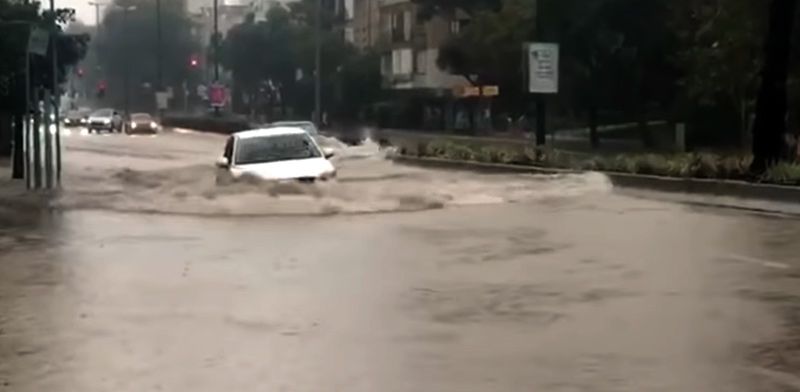
A new amendment that is expected to be put to a vote in the National Planning and Building Council in February places the responsibility for treating runoff water on the site of each construction project on the contractors instead of on the local authority. The amendment is intended to address the problem of flooding in city centers during the winter months, which is getting worse every year.
“The issue of drainage does not currently have a single father. The one who handles the runoff in the open areas is the drainage authorities, and in the urban areas these are the local authorities,” explains Rachel Kolsky, director of the water department at the planning directorate. “Most municipalities do this through canalization (piping). There are few municipalities that introduce elements of runoff management, such as the lakes of Rishon Lezion near Superland, or floodplains in Herzliya Park.”
In an attempt to deal with the phenomenon, contractors will now be required to create drainage solutions in the projects they build. The means discussed by the planning director in relation to the management of runoff water are varied. Among other things, seepage pits can be noted in the courtyards of the buildings, which transfer the water to the groundwater layer; Establishment of regulation databases in the basements of the building; Floating exterior flooring and beneath it spaces for rainwater storage; Absorbent green roof, covered with vegetation located above a drainage system; Green walls where plants that capture rainwater are grown; And more.

Solutions for the treatment of building drainage
The preferred solution in the public space is to use the public gardens as basins so that the water in the streets will drain into them. During the winter, ornamental ponds will be created in them, until the water is transported for further treatment in suitable areas.
One of the authorities’ means of handling runoff water management is the drainage levy (canalization), which is imposed on the purchaser of the apartment, in relation to the land or building area.
Kolsky explains the operative significance of the amendment: “Currently every project has to leave 15% of the land in its area free of seepage, but it does not work. The new idea is not to talk about area, but about the volume of water. Each plan should manage the rainwater within it, and that There will be a condition for issuing a building permit. “
We see underground construction of basements. How can drainage solutions be produced in such cases?
“We offer a wide range of solutions. Each plan, according to its geological conditions and rainfall regime, will decide what measures it takes.”
As for enforcement capacity, Kolsky says “we will need the mobilization of local authorities to monitor.”
The planning manager found that the benefits of transferring responsibility to the developer is about 0.7% additional to the cost of construction or NIS 3,000 for the price of a new apartment of 100 square meters.
The Builders’ Association of Contractors stated: “It is unfortunate that prior to the drafting of such a document, the government did not hold any discussions with the professional representative bodies, which could have significantly improved the planning director’s proposal. In the last decade, regulatory changes in the construction industry “An average apartment. Regulators should consider the significance of the measures that will only increase the rise in housing prices and the maintenance costs that will be imposed on apartment buyers.”